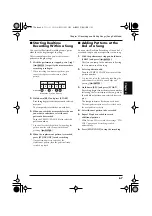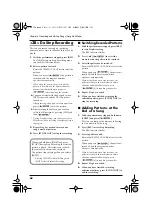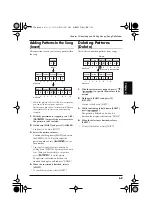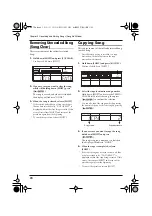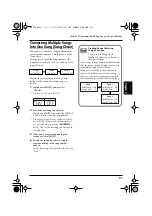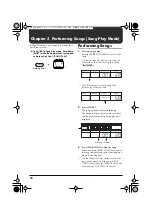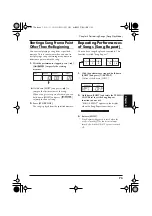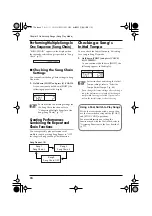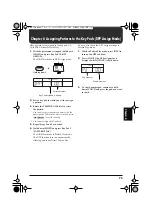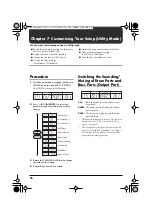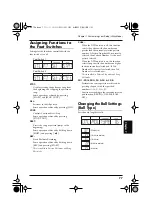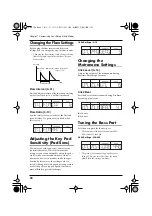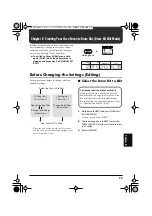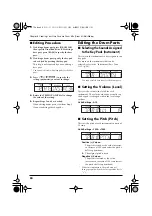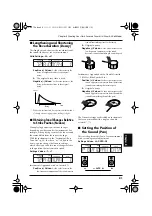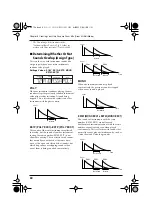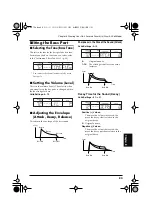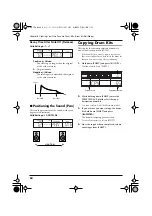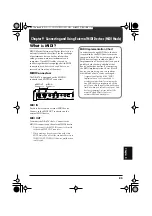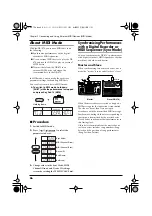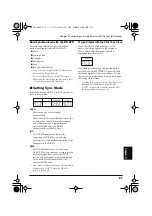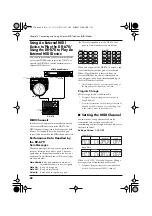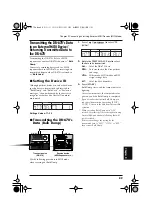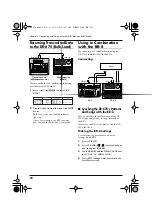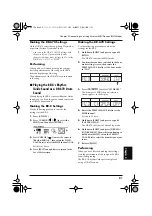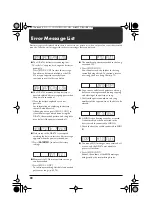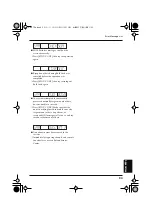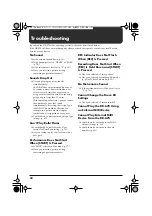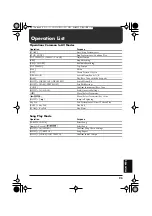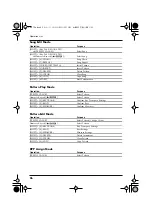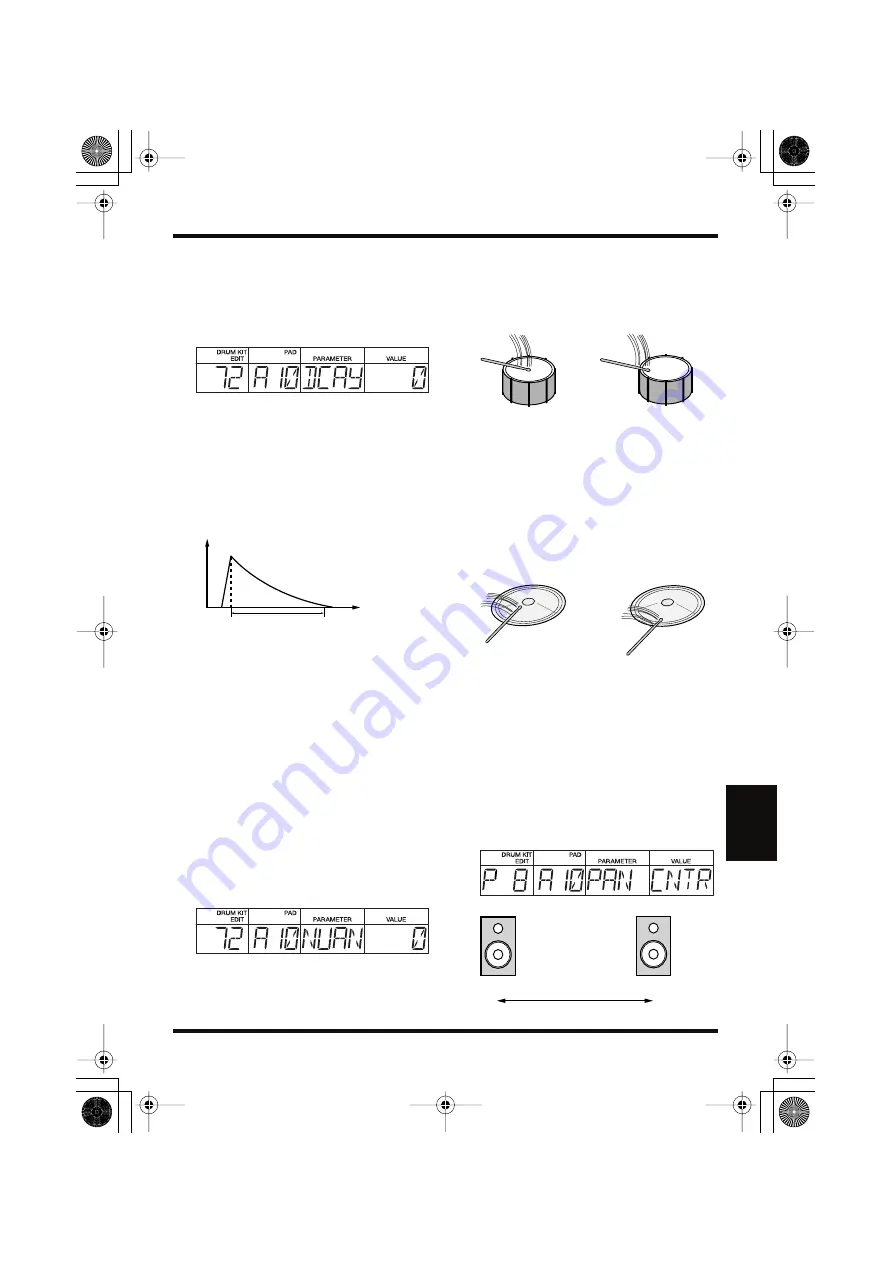
81
Chapter 8 Creating Your Own Favorite Drum Kits (Drum Kit Edit Mode)
Chapter
8
■
Lengthening and Shortening
the Reverberation (Decay)
This lengthens and shortens the reverberation of
the sound (the decay) for each instrument.
Valid Settings: -32– +31
fig.08-08
Positive (+) Values:
As the value increases, the
decay is lengthened relative to the original
decay.
0:
The original decay time is used.
Negative (-) Values:
As the value increases, the
decay is shortened relative to the original
decay.
fig.08-09
* With some instruments, it may seem that the amount
of change when using a positive setting is slight.
■
Obtaining Tonal Changes Relative
to Strike Position (Nuance)
When playing percussion, the tone changes
depending on where you hit the instrument. For
example, when playing a cymbal, the tone around
the center differs from the tone at the edge.
With the instruments in the “Instrument/Bass
Tone List” (p. 99) that have * or ** added to the
name, you can change the Nuance settings,
which allow you to obtain tonal changes relative
to the position the instrument is struck.
Settings Values: -7– +7
fig.08-10
Instruments Appended with an Asterisk (*)
Positive (+) Values:
As the value increases, the
low frequency components of the sound increase
(sound from striking closer to the center).
0:
Original nuance
Negative (-) Values:
As the value increases, the
low frequency components of the sound
decrease (sound from striking the outside part).
fig.08-11
Instruments Appended with a Double Asterisk
(**) (Hi-Hat, Ride Cymbal, Etc.)
Positive (+) Values:
As the value increases, the
sound appears to come more from the interior
(sound from striking the interior part).
0:
Original nuance
Negative (-) Values:
As the value increases, the
sound appears to come more from the outside
(sound from striking the outside part).
fig.08-12
The Nuance settings are disabled on instruments
that are not marked with a single or double
asterisk (*, **).
■
Setting the Position of
the Sound (Pan)
This sets the placement (Pan) of each instrument,
with seven degrees of adjustment.
Settings Values: L3–CNTR–R3
fig.08-13
fig.08-14
Level
Time
Decay
CNTR
R3
L3
L1
R1
DR-670.e.book 81 ページ 2006年10月18日 水曜日 午後3時12分
Summary of Contents for Dr. Rhythm DR-670
Page 15: ...15 Memo DR 670 e book 15...
Page 117: ...117 Memo DR 670 e book 117...
Page 118: ...118 Memo DR 670 e book 118...

